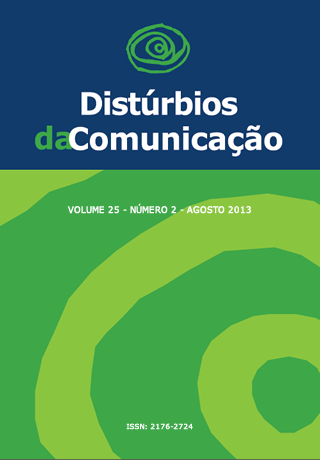Vocal Warm-up and Cool-Down on Pedagogy Students
Keywords:
voice, vocal quality, teaching, students, voice training.Abstract
Introduction: the voice is one of the main features of interaction between teacher and student. As teachers, future teachers are also risk population for the development of dysphonia and may be subject to protective intervention. Purpose: to evaluate the effect of a vocal warm-up and cool-down procedure at Pedagogy students. Method: A quasi-experimental study, pre-posttest without a control group, with fourteen Pedagogy students at a public university, participants of a short course. The analysis was performed by a self-assessment visual analogue scale of 10 cm, considering aspects related to the body and voice. The protocol was implemented in three steps: pre-test, post warm-up and post cool-down, and it was calculated the averages of the variables of discomfort and compared the measurements before and after performing each procedure. It was used the the Wilcoxon signed-rank statiscal test, adopting a significance level of 5%. Results: there was less discomfort with statistical significance after the vocal warm-up (p=0.002) and cool-down (p=0.001), with greater magnitude in both aspects related to voice. Conclusions: The vocal warm-up and cool-down have positive effects on the perception of students and should be taught to future teachers in order to prevent vocal disorders. The vocal cool-down, poorly researched, should not be passed over vocal health practices since its purpose showed obvious improvement in the investigated group.Downloads
Metrics
Downloads
Published
Issue
Section
License
Copyright (c) 2013 Maria Lúcia V. Masson, Camila M. Loiola, Eliana M. G. Fabron, Maria de Lourdes M. Horigüela

This work is licensed under a Creative Commons Attribution 4.0 International License.









